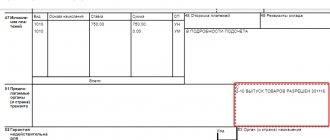Legislative acts and regulatory requirements for seals
Official seals are used by commercial organizations
There are simple seals, as well as those with the coat of arms of the Russian Federation on them. Downtime can be used in any case that involves confirming the authenticity of a document.
As for the official seal, its help is resorted to in certain cases. It is needed and used mainly by commercial organizations. Certain requirements are provided for stamps with the image of the coat of arms; they are regulated by legislative and regulatory acts:
- GOST R51511-2001 in the new edition will help you become familiar with the requirements that the state imposes on signs with a design of the coat of arms of the Russian Federation.
- If we are talking about joint stock companies, then the requirements that the seals of these organizations must meet are described in paragraph 6 of Article 2.
Special requirements for seals with the reproduction of the state emblem of the Russian Federation
It is believed that all signs with the coat of arms of our country must meet certain requirements in shape and size:
- the stamp is made invariably round in shape;
- the coat of arms of the Russian Federation, the same double-headed eagle, is visualized on the surface;
- the coat of arms is in the central part, and in a circle is the name of the organization, in accordance with what is specified in the regulatory documents;
- if the name of the organization has an abbreviation, then it is indicated in brackets after the main name;
The name of the organization is written in Russian; if it has another variation (in English), then it is indicated later.
Requirements for JSC signs:
- The stamp must be round in shape and contain the full name of the joint stock company.
- The name is indicated in Russian, and if required, in any other language, in particular in the language of the peoples of the Russian Federation.
- The sign must also contain information regarding the location of the organization.
How to use stamps in an organization
In addition to the main and auxiliary seals, stamps are used in the organization’s office work. A stamp is a type of rectangular seal. Stamps formally replace handwritten records in repeating situations of the same type in paperwork. In this case, stamps are details that are involved in giving the document legal force and speeding up document flow.
There are several types of stamps:
- corner (address);
- registration;
- restrictions on access rights;
- with the details of the organization;
- marking.
A corner (address) stamp is used if the organization does not have printed or “electronic” forms. The corner stamp can be used for correspondence, issuing current certificates, etc. In this case, a corner stamp made in accordance with the necessary requirements gives the document an official character. In the corner stamps, the organization's details are arranged in the same sequence as on the form. The details indicated in the corner stamps and seals must match. The size of the corner stamp, as a rule, corresponds to the dimensions of the corner form (70x100 mm).
The registration stamp contains the name of the organization, fields for indicating the date of receipt and the number (index) of the incoming document. Such a stamp establishes the organization’s responsibility for the document and the start of the execution period. The registration stamp is not placed on attachments to the document, but only on the document itself.
A stamp restricting the right of access is affixed to the upper right corner of each sheet of the document, on journals of registration of documents with limited right of access and on packages with documents with limited right of access. This stamp may be supplemented with data provided for by law on information classified as state secrets and confidential information.
A stamp with company details is usually small in size with a frame. It includes the short name of the organization, place of registration, TIN.
Marking stamps are used for the internal needs of the enterprise (labeling products, containers, etc.) using special stamp ink. Their size, shape and content are not regulated.
Which institutions have the right to use the official seal?
It is advisable to register the seal in several government agencies
Commercial organizations, joint stock companies, as well as individual entrepreneurs. Limited liability companies also use similar attributes.
Do I need to register my seal?
Regarding registration, everything is ambiguous. Yes, it is better to register and this will have to be done in several institutions.
State authorities are interested in registering signs containing the image of the coat of arms. If the seal is not registered, then the activities of the organization that uses it may be considered contrary to the legislation of the Russian Federation.
Where does the trademark registration take place:
- you will have to contact the tax service with this request;
- the procedure also takes place at the registration and chamber of commerce and industry;
- You should contact the Department of Internal Affairs and the register of the manufacturer.
The stamp is assigned a specific number. They also open a registry file, in which notes are made as changes occur. It is believed that registration will help avoid fraud.
Some documents cannot be stamped with a stamp
But on such a seal, instead of a coat of arms and emblem, the surname, name and patronymic of the individual entrepreneur are located, and his location, tax identification number and registration number are also indicated. Stamps, daters, facsimiles A stamp is a type of rectangular seal with some text.
Most often, stamps are used to put the details of an organization on a document. There are stamps confirming a certain action. For example, “Paid”, “Insert issued”. Dater is a stamping device for automatically stamping dates.
The procedure for using stamps and daters is not regulated by law, so the organization must determine it independently. A facsimile is a seal or cliche with the help of which a person’s signature is reproduced.
In accordance with Article 260 of the Civil Code, facsimiles can only be used in accordance with the procedure established by law. However, such an order does not yet exist.
The instructions are approved by the head of the organization due to the special importance of document authentication.
The instructions may have the following sections: - list of seals used in the organization; — storage locations and positions of persons entitled to use seals; - procedure for using seals.
The instructions must also contain lists of documents certified by the official seal (seal of the organization), a seal without reproducing the coat of arms or other symbols, and the seal of a structural unit.
The preparation of instructions should be linked to the development of a sheet of unified forms of documents for the organization, which contains the column “seal”. The instructions determine the storage location of the seals and the persons authorized to organize the storage and use of the seal and monitor its correct use.
What documents are affixed with the official seal of the institution?
The right to have and use a seal should be recorded in the regulations on the structural unit. The location of the official seal imprint in relation to the signature is not established in current legal acts.
It is recommended to place the seal imprint so that the signature and all information on the seal imprint are clearly visible.
Important
No. 225.** Approved by Resolution of the Ministry of Labor and Social Development of the Russian Federation of October 10, 2003 No. 69. In addition, there is one case when a stamp must be placed in the work book - if the employee has been issued an insert.
This stamp is placed on the inside cover of the book or on the title page and is a rectangular imprint with the words “Insert issued.” Larisa SANKINA, Associate Professor of the Department of Document Science, Russian State University for the Humanities: - Unfortunately, none of the regulations regulating work with a work book speaks about how to cancel an incorrectly placed seal (for example, the seal of another organization). Meanwhile, such an error may raise questions among the Pension Fund authorities when assigning a pension to an employee. We believe that it can be corrected in the same manner as an incorrect entry in the “Work Information” section of the work book.
Where can I put a stamp “for documents”?
The list of seals includes: - the name and number of copies of each seal authorized for use
What to do if the seal is lost or stolen?
Such situations often arise, but do not panic. If the seal with the symbols of the coat of arms has disappeared, it has been lost or stolen, then you should proceed according to the following scheme:
- You can contact the police with a statement; it is unlikely that law enforcement officers will begin an urgent search, but at least they will be aware of the events taking place and maybe help you find the value.
- It is imperative to notify your partners that the main stamp is lost or stolen.
- You can get a certificate from the police, they will confirm the fact of loss or theft of the sign. Having such a document in hand, a person has the right to restore the seal.
Whoever steals the official seal has the right to enter into a deal to receive a large sum of money or provide certain services. It is for this reason that it is so important to register signs and report their loss.
Do I need a stamp on an official letter?
Previously, when the forms of organizations and enterprises were produced exclusively by printing and each of them had its own registration number, there was a rule according to which a seal was not placed on a letter printed on the form. Exceptions are letters that have financial content. But now, in almost all enterprises, in order to save time and money, forms are created in ordinary text editors installed on any computer and printed immediately on a printer. There is no particular difficulty in forging any form.
Please note: If the letter is unstamped and printed on a form, but there are doubts about its authenticity, you must contact the sending organization at the contact numbers indicated in the header of the form and clarify whether they sent such a document.
It makes sense to draw up a local regulatory act that will regulate the procedure for using seals at the enterprise, and clearly state which letters need to be certified with a seal. This document will define a list of business papers that must necessarily require certification, and will also establish rules in which cases and on which documents a stamp or equivalent seal will be affixed, and on which - a simple one.
What types of documents must be certified with a stamp?
Not all documentation requires mandatory affixing of the main seal. The types of papers that must be certified depend on the type of activity of the enterprise .
Primary
Generalized papers refer to primary documentation: they confirm the act of conducting a legal transaction. All documents related to primary documents undergo accounting.
Under any circumstances of the transaction, stamps are required on documents printed in accordance with generally accepted standards. If documents with an individually developed structure are used within the organization, stamping them remains at the discretion of the manager .
Orders
They relate to internal documentation: orders cannot be used outside the organization. If an employee requires a copy of a document for personal use, only the copy is stamped. The original document is certified only by signature.
Letterheads
Placing a stamp depends on the type of form . If it relates to documents subject to reporting, it must be stamped. As a rule, these are powers of attorney and letters of guarantee that authorize an individual or legal entity to represent the interests of the company.
If the form is issued on special paper with the symbols of the organization, they do not require additional certification.
Other types of documentation
In addition to basic documentation, contracts, acts and certificates must be certified. There are separate regulations for certification of work records. When hiring, a stamp is placed on the title side of the first page.
Any changes in personal data (change of surname, address) are certified by affixing a second stamp to the back of the page. the organization's seal is also affixed next to the corresponding entry .
What documents are stamped on? All about printing and its use
| Stamp on a document: which one to put? |
According to the methodological recommendations for the implementation of GOST R 6.30–3003, a seal is a mechanical device, a device containing a printing block for subsequent imprinting on paper.
The seal on the document gives it legal force and certifies the authenticity of the official’s signature.
In GOST R 6.30–2003, the name of the attribute has changed compared to GOST R 6.30–97 (the attribute was called “seal”), the new name is “seal imprint”. The essence of the props remains the same.
What kind of letter is certified by a seal?
- on documents certifying the rights of the bearer;
- on those that record facts related to cash flows;
- in other cases requiring certification of the authenticity of the signature.
The law does not establish a clear list of documents on which this or that seal is affixed. But, if you follow the recommendations of the above-mentioned GOST, a stamp is placed on the letter if it:
- is guaranteed;
- confirms the fulfillment of previously assumed or the assumption of new payment obligations;
- establishes a delivery schedule or, for example, a phased payment schedule.
Using a seal: how and where to put it
Within one organization, different types of printing can be used: basic, structural and special. Stamps are placed on the following types of documents :
- acts;
- powers of attorney;
- contracts;
- conclusions;
- writs of execution;
- letters of guarantee;
- registers;
- statements;
- travel documents;
- instructions;
- agreements;
- references and characteristics;
- petitions and letters of guarantee;
- title lists;
- cost estimates;
- charters of organizations.
Most of the documents contain the special abbreviation “M.” P.". It marks the place where the stamp should be placed. If it is not there, you can put an imprint arbitrarily. It must be placed so that it does not overlap the signature of the witness, but captures several letters from the title of the position of the authorized person.









